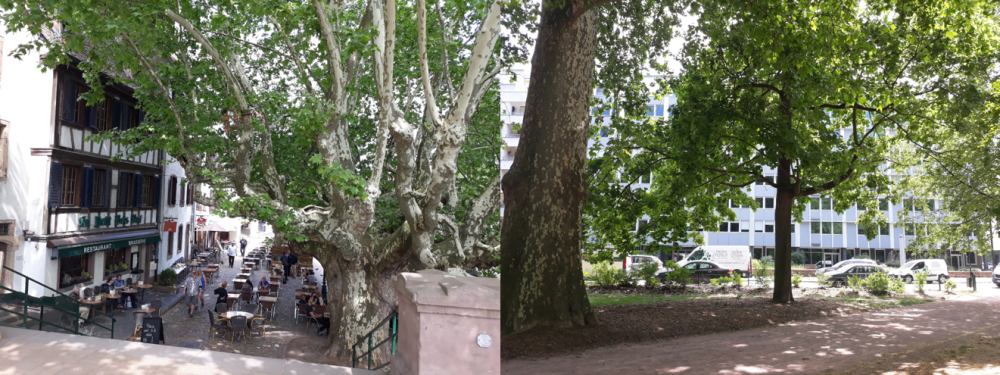Climate change and risks Reading time 3 min
The cooling effect of trees in cities
Published on 07 July 2022

Among the most promising strategies for adapting cities to climate change—and in particular to extreme heat waves—the integration of trees into urban environments immediately stands out. In fact, through their transpiration and shade, trees are capable of significantly improving the heat balance of their surroundings. Increasing the number of green spaces in cities seems to be a solution favourably received by the population, since cooling is just one of the many ecosystem services that trees provide for us—air filtration, greater biodiversity, and countless social and recreational opportunities.
Better understanding the interactions between trees and urban areas was the main objective of COOLTREES—an ANR project led by the PIAF joint research unit—which aims to design sustainable cities where trees play an integral role. Up until now, the potential thermal benefits of trees in urban environments have been under-researched, especially when it comes to street trees. Yet, their leaves are a major heat absorbing shield. The massive impact of trees is all the more obvious on sunny days, since temperatures measured at one in the afternoon are 7°C lower under the trees than under direct sunlight*.
The research team also designed and developed LASER.T, a tool that simulates the impact of trees on the urban microclimate and its functioning. The simulations are created by simultaneously taking into account all thermoradiative interactions between the different elements of an urban landscape—including vegetation. The tool is even capable of mapping microclimates within the tree crowns. A database containing all readings taken between 2014 and 2018 is already available, and the model will also be available as an open source. Additionally, a graphical user interface is in the making, which will provide valuable information to non-scientists (green spaces and park technicians, urban planners, etc.) enabling them to assess, among others, the advisability of a tree installation.

This project has contributed to furthering our understanding of the role of trees in cities and has led to the development of an initial modelling framework. Perfecting this model will be the objective of a new ANR research programme, TIR4sTREEt, coordinated by INSA Strasbourg, in collaboration with INRAE (PIAF and Sylva joint research units).
Read all about the project https://www6.inrae.fr/cooltrees_eng/
*These values correspond to a typical street lined with buildings and trees on both sides.
